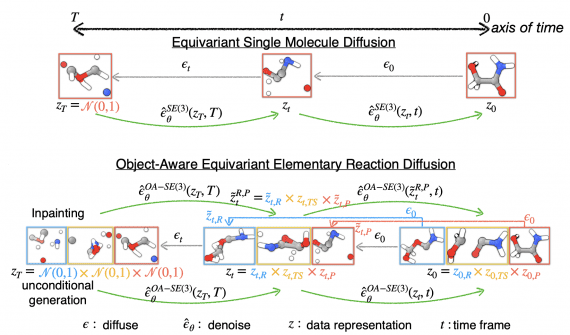
Predictive weather data is a crucial asset derived from extensive datasets collected from meteorological observations, satellite imagery, radar systems, and weather stations globally. This article delves into how predictive weather data is harnessed, its significant benefits for various industries, and the impact it has on business operations and decision-making.
- The Significance of Predictive Weather Data
- Impact of Predictive Weather Data on Industries
- Technologies Powering Predictive Weather Analytics
- Challenges and Considerations
The Significance of Predictive Weather Data
Businesses are increasingly recognizing the importance of predictive weather data in enhancing operational efficiency and reducing risks. Integrating predictive weather analytics into business models allows companies to anticipate weather conditions and adjust their strategies accordingly, leading to optimized operations and reduced financial losses.
Predictive weather data helps industries manage resources better, plan logistics, ensure worker safety, and even tailor marketing strategies based on weather-driven consumer behavior. It’s not just about responding to weather changes but proactively using forecasts to make informed decisions that align with business goals.
Impact of Predictive Weather Data on Industries
Agriculture
In agriculture, predictive weather data is indispensable. Farmers rely on accurate weather forecasts to determine the optimal times for planting, fertilizing, and harvesting. Advanced weather analytics can predict sudden weather changes, helping to mitigate risks of crop damage due to adverse weather conditions. This data-driven approach not only maximizes yield but also enhances resource management through efficient water and land use.
Retail and E-commerce
The retail sector utilizes predictive weather data to anticipate consumer buying patterns that change with weather conditions. For instance, an upcoming cold snap can trigger an increase in the sale of heaters or winter clothing. E-commerce platforms adjust inventory and logistics operations based on weather forecasts to manage delivery times effectively and reduce delays.
Energy
Energy companies leverage predictive weather data to forecast demand for heating and cooling, which fluctuates with the weather. This forecasting enables energy providers to adjust supply, optimize grid performance, and prevent outages. Renewable energy sources, like wind and solar, use weather predictions to estimate energy production levels and plan accordingly.
Transportation and Logistics
Weather conditions directly affect transportation systems. Predictive data enables airlines, shipping companies, and logistics providers to reroute vessels, adjust schedules, and implement safety measures in advance, minimizing disruptions and maintaining operational efficiency.
Insurance
The insurance industry uses predictive weather data to assess risks and adjust premiums for policies related to weather-related damage. Companies can better anticipate and mitigate losses related to natural disasters, reducing the financial impact on both the insurer and the insured.
Technologies Powering Predictive Weather Analytics
Predictive weather analytics relies on a sophisticated blend of technologies to turn vast data sets into actionable forecasts. Here’s a concise overview of the key technologies involved:
Meteorological Models
Numerical weather prediction (NWP) models are fundamental, using equations that simulate atmospheric conditions to forecast weather. These models analyze data from global sources like satellites and weather stations to predict local weather patterns.
Artificial Intelligence and Machine Learning
AI and ML enhance the accuracy of weather predictions by learning from historical data and recognizing patterns. They continuously refine forecasts based on new data, making predictions more reliable, especially in regions with complex weather systems.
High-Performance Computing
High-performance computing (HPC) is critical for processing the enormous volumes of data involved in weather forecasting. HPC systems execute complex simulations quickly, essential for timely and accurate weather predictions.
Big Data Technologies
Big data frameworks like Hadoop and Spark manage and analyze the extensive data collected from various sources, supporting large-scale weather analyses and simulations.
Geospatial Analysis
Integrating weather data with geographic information systems (GIS) helps in visualizing and analyzing weather impacts on specific locations, crucial for industries like agriculture and disaster management.
Weather APIs
Weather APIs play a crucial role by providing developers and businesses with access to real-time weather data and forecasts. These APIs allow for easy integration of weather data into business applications, enhancing decision-making processes by providing timely weather information tailored to specific needs.
The synergy of these technologies enables advanced predictive weather analytics, allowing businesses and governments to make informed decisions to mitigate risks and optimize operations in response to weather conditions. As technology evolves, the accuracy and utility of weather forecasts will continue to improve, expanding their applications across various sectors.
Challenges and Considerations
Despite the advantages, integrating predictive weather data into business operations presents challenges. These include the cost of setting up and maintaining advanced analytical systems and the need for specialized personnel capable of interpreting complex data.
Moreover, the accuracy of weather predictions can vary depending on the geographic location and the type of weather patterns involved, necessitating continual adjustments and updates to predictive models.
Conclusion
As businesses increasingly operate on a global scale, the ability to predict and adapt to weather changes becomes more critical. Predictive weather data stands out as a strategic asset in a company’s toolkit, enabling more informed decisions that align with environmental conditions and market demands.
The integration of predictive weather analytics into business operations is not just about mitigating risks—it’s about turning weather into a competitive advantage that can dictate market trends and influence business outcomes. As technology advances, the scope and accuracy of predictive weather data will only expand, further enhancing its value to industries worldwide.



